Puppies, those bundles of energy and furry chaos, have a knack for transforming your home into a lively canine amusement park. But fear not! As your furry friend grows and matures, their vitality will eventually settle into a more balanced and calm demeanor. If you’re eagerly awaiting the moment when the whirlwind of puppy energy subsides, this list is here to give you hope. So, prepare to learn when puppies hit their chill button and transform into the Zen masters you yearn for!
When Do Puppies Calm Down?
The Hyper Puppy Phase
When you welcome a new puppy into your home, be prepared for an explosion of energy and endless enthusiasm. These adorable bundles of joy are like miniature tornadoes, zooming around with boundless energy, exploring every nook and cranny, and bouncing off the walls. It’s a sight that will melt your heart and leave you wondering if they’ll ever calm down.
From the moment they arrive, puppies are like little balls of lightning, electrifying everything they touch. Their playful antics and curiosity know no bounds as they embark on a mission to discover the world around them. Your once serene living room becomes their playground, with no furniture left unexplored and no shoe left unchewed.
It’s an exhausting stage that can leave you feeling like a perpetual motion machine, trying to keep up with its endless energy. You may find yourself asking, “Will they ever calm down?” The answer is a resounding “yes,” but it will take some time.
As puppies grow and mature, their boundless energy gradually levels out. With proper training, socialization, and consistent routines, you’ll see glimpses of calmness peeking through the whirlwind. They’ll learn to settle down, listen to commands, and understand appropriate behavior.
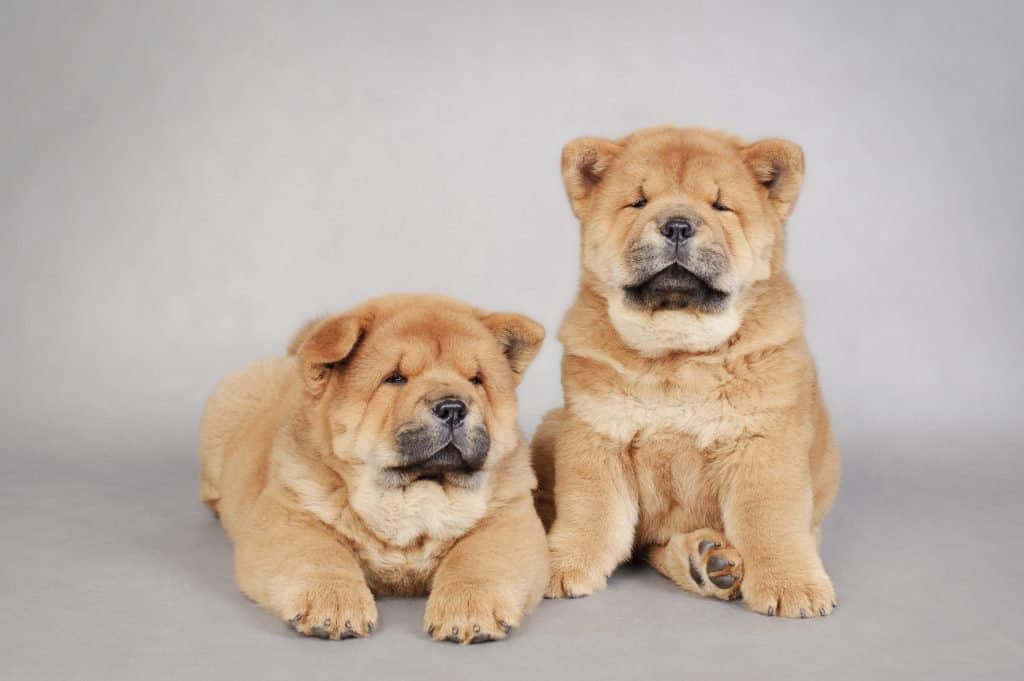
However, it’s important to remember that each puppy is unique, and the timeline for calming down may vary. Some puppies naturally have a more laid-back temperament, while others take longer to find their Zen. It’s a journey that requires patience, understanding, and a healthy dose of laughter.
In the meantime, embrace the chaos and enjoy the adorable tornado that has entered your life. Take the time to create a safe and enriching environment for your puppy, providing plenty of opportunities for play, mental stimulation, and social interaction.
And as you navigate through the whirlwind of puppyhood, know that this stage is fleeting. Before you know it, your puppy will grow into a calm and well-mannered adult dog. The boundless energy will transform into a mature zest for life, and you’ll look back on these moments with fondness and a smile.
Teething Troubles
The teething phase is when puppies become little chewing machines on a mission. As their baby teeth give way to their adult teeth, puppies may experience discomfort and soreness in their gums. They instinctively turn to their surroundings and chew on everything within reach to find relief.
During this teething phase, puppies may become more active and exhibit hyper behavior. Their need to gnaw and explore provides them entertainment and temporary relief from the discomfort. It’s as if they’ve discovered a secret stash of chewable treasures and are determined to explore every nook and cranny to soothe their sore gums.
You might find your shoes, socks, and even furniture legs falling victim to their sharp puppy teeth. No item seems safe from their insatiable desire to chew and gnaw. It can be a challenging time for puppy parents, but understanding the reasons behind their hyper behavior can make it easier to handle.
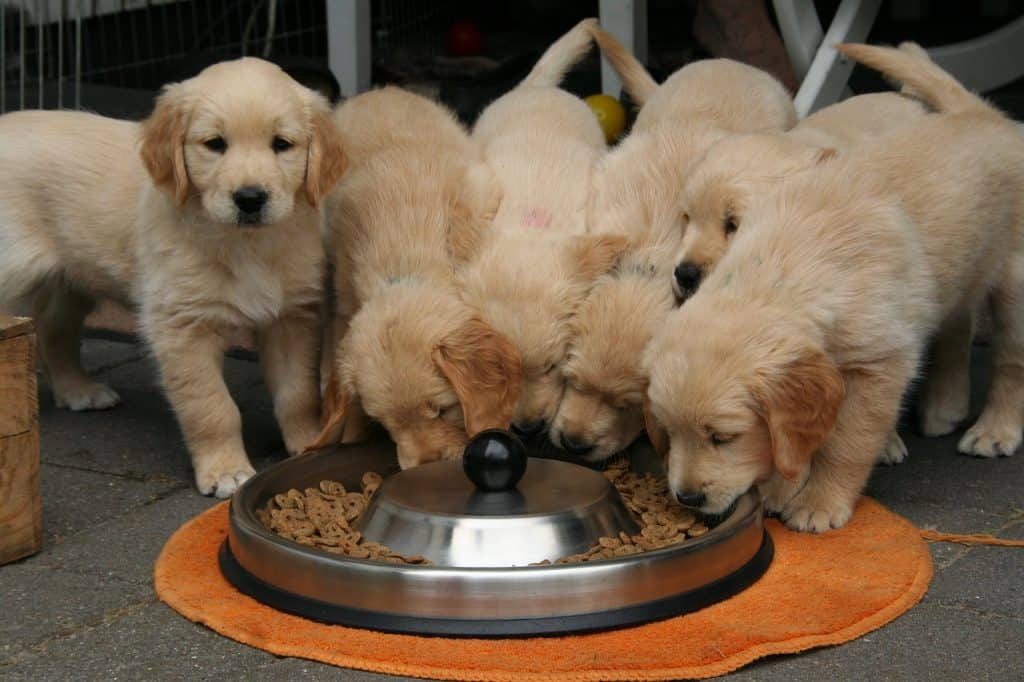
To help your puppy through the teething phase, provide them with appropriate chew toys specifically designed for teething puppies. These toys offer a safe outlet for their chewing needs and help alleviate discomfort. Ensure the toys are durable and made of materials safe for chewing.
Additionally, placing the chew toys in the freezer temporarily relieves their sore gums. The cold sensation can help numb the discomfort and provide a soothing effect.
It’s important to note that this teething phase is temporary. As your puppy’s adult teeth fully emerge, the discomfort will subside, and their chewing habits will likely decrease. However, it’s essential to reinforce appropriate chewing behavior and redirect them to their designated chew toys.
The Adolescent Energy Surge
Ah, the teenage months—when your adorable puppy seems to transform into a furry ball of unbounded energy. As puppies reach the age of 4 to 8 months, brace yourself for another vitality surge rivaling their earlier puppyhood. It’s as if they’ve stumbled upon a secret stash of batteries and can’t help but unleash their inner party animal.
During this teenage phase, puppies are bursting with newfound confidence and curiosity. They have an insatiable thirst for adventure and a desire to explore every nook and cranny. Their energy levels seem endless as they zoom around with lightning speed, playfully bouncing off walls and furniture.
This stage may test your patience and leave you wondering if your furry friend will ever settle down. But fear not; it’s just a phase—a necessary part of their development and growth. Like human teenagers, puppies undergo significant physical and hormonal changes, and their energy levels reflect this transition.

While navigating through their teenage energy surge can be challenging, remember that consistency and positive reinforcement are key. Continue with their training regimen, reinforcing commands and boundaries and providing mental and physical stimulation to help channel their energy in a positive direction.
Engage in activities that allow them to burn off excess energy, such as playdates with other dogs, interactive games, and daily walks or runs. Mental stimulation, such as puzzle toys or training sessions, can help keep their busy minds occupied.
It’s essential to remain patient during this phase, as it will eventually pass. As your puppy matures and enters adulthood, their energy levels will naturally stabilize and develop into the well-rounded companion you’ve been patiently waiting for.
Maturity Brings Calmness
As your beloved puppy ages 1 to 2 years, a noticeable shift in their energy levels will begin. Like a butterfly emerging from its chrysalis, your puppy will transform as they mature into a more composed and balanced adult.
During this time, you’ll start to observe a gradual mellowing of their vitality. While they may still have bursts of energy and playful moments, their overall demeanor becomes more focused and controlled. You’ll witness glimpses of the calm and composed adults they become as their puppy-like antics give way to a more mature outlook.
This shift in energy levels is a natural part of their development. Just as children grow and become more settled as they enter adolescence, puppies undergo a similar transition. Their bodies and minds are maturing, and they are learning to navigate the world with a sense of poise and self-control.
During this phase, you may notice your dog’s ability to settle down and relax more easily. They become more content with quieter activities, such as cuddling on the couch or calmly observing their surroundings. These moments of tranquility become more frequent as they mature into adulthood.

While every dog is unique and may progress at their own pace, it’s generally around this age that you’ll see the signs of a more composed adult companion. Their energy becomes channeled into focused activities and tasks, and they better understand appropriate behavior in different situations.
However, it’s important to remember that even as your puppy matures, it will retain its playful nature and the ability to enjoy simple pleasures. Just as adults find joy in recreational activities, dogs continue to engage in play and maintain their sense of enthusiasm, albeit in a more controlled manner.
As your puppy transitions into a calm and composed adult, it’s essential to continue nurturing their physical and mental well-being. Regular exercise, mental stimulation, and social interaction remain crucial for their overall health and happiness.
Training Pays Off
Consistent training is like the secret sauce that helps puppies develop self-control and master the art of impulse management. It’s a crucial ingredient in transforming your furry bundle of energy into a relaxed and well-behaved companion. Through the process of training, you’ll witness your pup’s ability to calm themselves in various situations, bringing a sense of peace and harmony to your life.
Training gives puppies the tools to understand and respond to your commands. Basic commands such as “sit,” “stay,” and “leave it” serve as building blocks for developing self-control. These commands teach your puppy to pause, listen, and make conscious choices, rather than succumbing to impulsive behaviors.
As you embark on training with your puppy, you’ll witness their growth and progress. Initially, they may struggle to focus and maintain attention, but with patience and consistency, they’ll start to understand and respond to your cues. Through positive reinforcement techniques like treats, praise, and play, you’ll motivate them to learn and perform the desired behaviors.
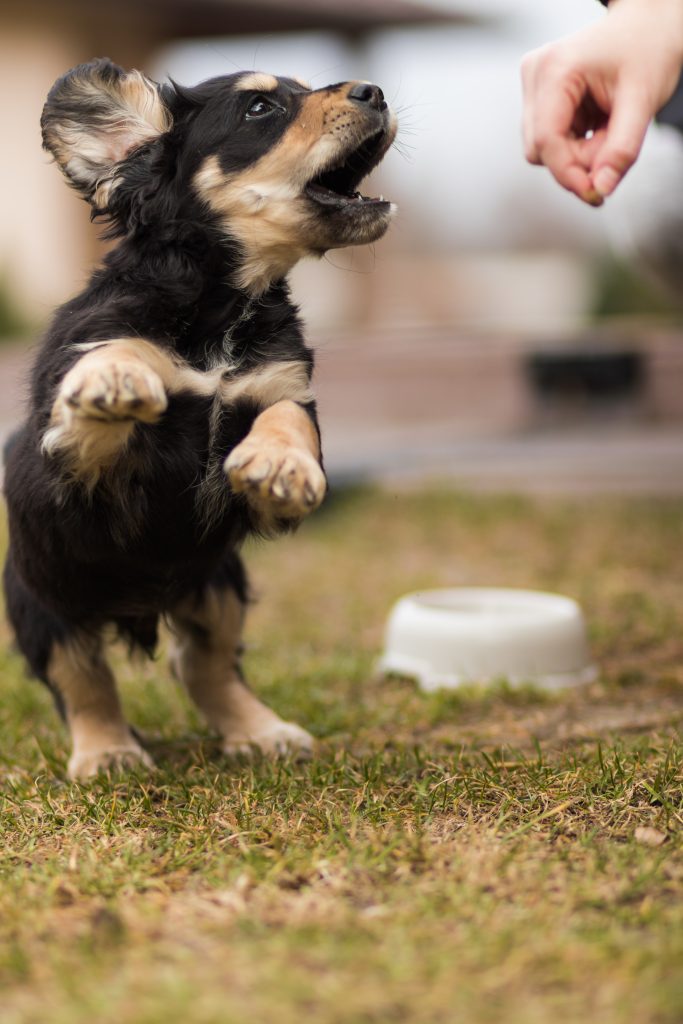
As your pup begins to grasp the commands, you’ll notice a shift in their behavior. They’ll start to exhibit self-control and an ability to calm themselves in various situations. When faced with a tempting object, they’ll learn to resist the urge to grab it with a well-timed “leave it” command. In social interactions, they’ll learn to sit and stay calm, displaying proper manners and respect for others.
The beauty of consistent training lies in the bond it fosters between you and your puppy. You establish clear communication, trust, and mutual understanding through training sessions. Your puppy learns to look to you for guidance and relies on your cues to navigate the world around them.
Training shapes your puppy’s behavior and enhances their overall well-being. It provides mental stimulation, vital for preventing boredom and destructive behaviors. As they learn to focus and engage with you during training sessions, their minds become sharper and more receptive to learning and new experiences.
Exercise is Key
Regular exercise and mental stimulation are crucial to achieving a calm and balanced dog. You can reduce restlessness and promote relaxation in your furry companion by providing outlets for their energy and engaging their minds.
Daily walks are an excellent way to meet your dog’s exercise needs and explore the world together. Not only does walking provide physical activity, but it also offers mental stimulation as your dog encounters new sights, smells, and sounds. It allows them to burn off excess energy and release any pent-up tension, resulting in a more serene and content demeanor.
Interactive play sessions are another valuable tool for promoting calmness. Playtime strengthens the bond between you and your pup and provides an opportunity for them to engage in mentally stimulating activities. Whether a game of fetch, tug-of-war, or hide-and-seek, interactive play taps into their instincts and channels their energy positively and constructively.
Puzzle toys are a fantastic way to engage your dog’s mind and entertain them. These toys require problem-solving skills to access treats or toys hidden within. They provide mental stimulation and help prevent boredom, which can lead to destructive behaviors. Puzzle toys challenge your dog’s cognitive abilities, keeping their minds sharp and focused and ultimately contributing to a calmer and more balanced state.
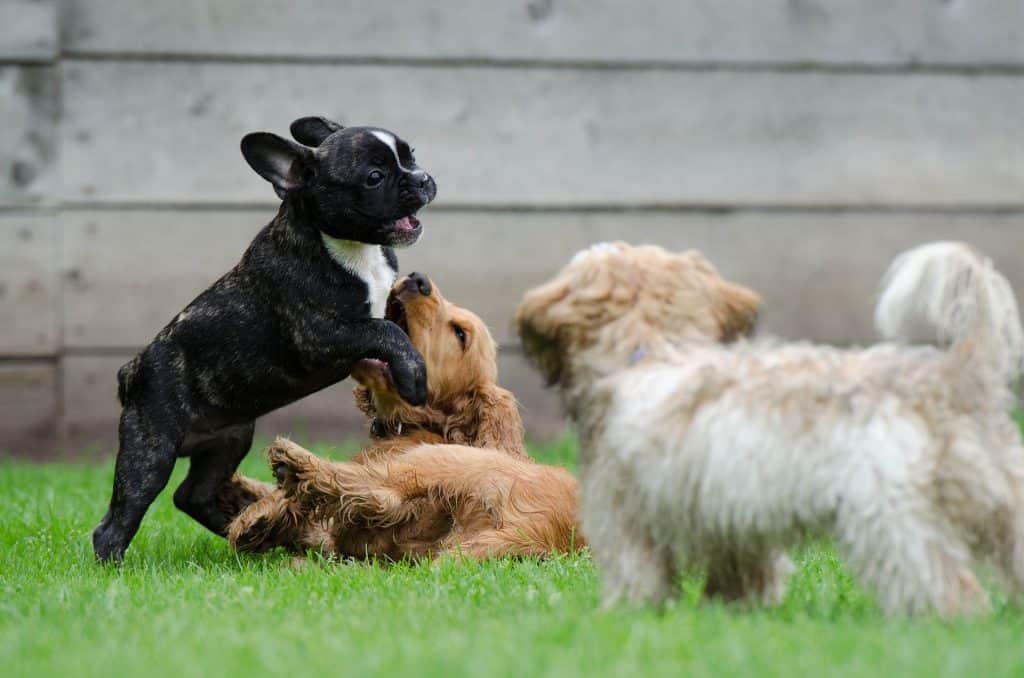
It’s essential to keep in mind that each puppy has their own unique personality and energy levels. Some breeds naturally have more energy and require higher levels of exercise and mental stimulation, while others may have a predisposition for a calm demeanor. Understanding and appreciating your puppy’s individuality is crucial as you guide them toward serenity.
Observing and adapting to your pup’s specific needs is essential in providing appropriate exercise and mental stimulation. Pay attention to their energy levels, behavior patterns, and preferences. Some puppies may thrive with longer walks or more challenging play sessions, while others may prefer shorter bursts of activity. Tailor their exercise routines to suit their needs and monitor their response to ensure it’s balanced and enjoyable for them.
Personalities Vary
In the world of puppies, one size does not fit all when it comes to achieving calmness. Each puppy has a unique personality, energy levels, and predispositions. Understanding and appreciating their individuality is essential as you embark on the journey of guiding them toward serenity.
Certain breeds may naturally have higher energy levels and require more physical and mental stimulation to reach a state of calm. These breeds, like Border Collies or Australian Shepherds, are often known for their boundless energy and herding instincts. On the other hand, some breeds, such as Basset Hounds or Bulldogs, are more inclined towards a calm and relaxed demeanor.
It’s important to recognize and respect your puppy’s inherent traits and tendencies. Take the time to research and understand the breed characteristics to gain insights into their energy levels and potential challenges. This knowledge will help you set realistic expectations and tailor your approach to their unique needs.
While breed tendencies provide a general framework, remember that individual variations exist within each breed. Some puppies may exhibit higher energy levels or a more laid-back temperament compared to others of the same breed. Factors such as genetics, early socialization, and individual experiences can all shape a puppy’s behavior and energy levels.
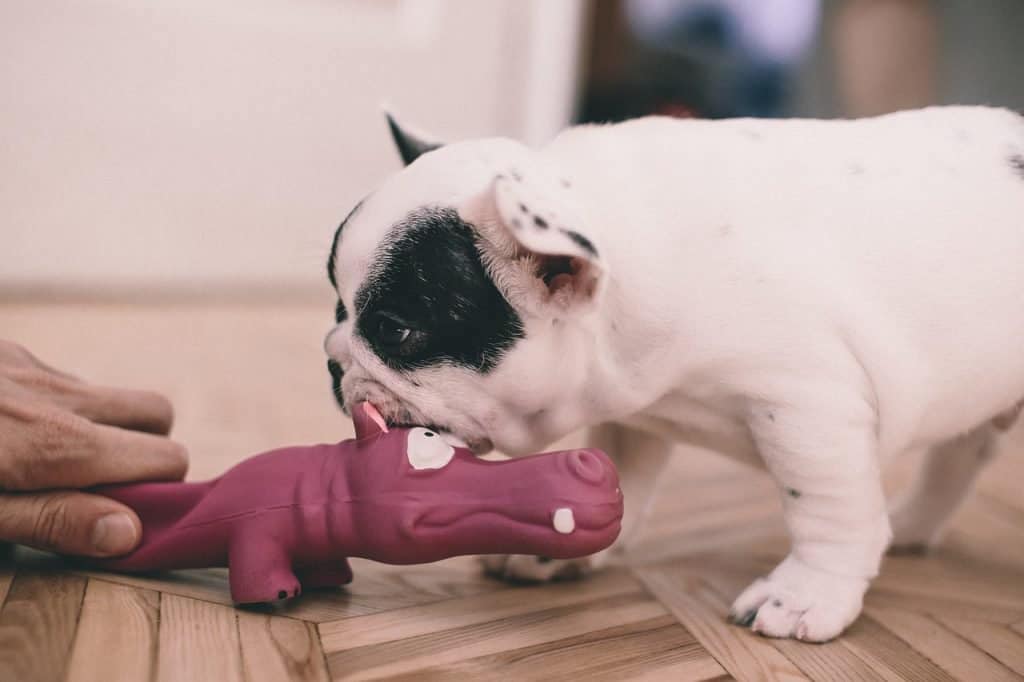
As you guide your puppy towards serenity, observe their behavior, energy patterns, and preferences. Pay attention to their responses to different stimuli, activities, and environments. Some puppies may thrive with more physical exercise, while others may require more mental stimulation to achieve a state of calm. Adjust your approach accordingly, tailoring the activities and routines to suit your puppy’s unique needs.
Additionally, remember that age plays a role in a puppy’s journey to calmness. Younger puppies naturally have more energy and may require frequent breaks and shorter play sessions. As they mature, their energy levels tend to stabilize, and they become more capable of self-regulation and relaxation.
Patience and understanding are key during this process. Embrace the uniqueness of your puppy and avoid comparing their progress to others. Celebrate their small victories, no matter how long or short their journey may be. Each step towards serenity is a significant achievement.
Patience and Consistency
Achieving calmness in your puppy is a gradual process that requires patience, consistency, and lots of love from you as their dedicated owner. It’s important to celebrate the small victories and acknowledge their progress along the way.
Remember, transforming your energetic and playful pup into a Zen master doesn’t happen overnight. It’s a journey that unfolds step by step, with each milestone bringing you closer to your goal. Stay committed to the process and embrace the small wins along the way.
Every time your puppy settles down for a quiet moment or responds to a command with focus and attentiveness, it’s a cause for celebration. Recognize and reward these moments of calmness, reinforcing the behavior you desire. Positive reinforcement, such as praise, treats, and affection, helps reinforce the connection between calm behavior and positive outcomes.
Consistency is key in fostering calmness. Establish daily routines that incorporate exercise, mental stimulation, and relaxation time. By providing structure and consistency in their daily lives, you create a sense of predictability that can contribute to a more relaxed and settled state.
As you navigate this journey, remember that your puppy is learning and growing every day. Be patient with them, as progress may come in small increments. Consistency in your approach and expectations will help them understand what is desired behavior and guide them towards calmness.

It’s important to approach the process with empathy and understanding. Your puppy’s energy and enthusiasm are part of their nature, and it’s essential to strike a balance between managing their energy levels and embracing their joyful spirit. Appreciate their unique personality and temperament, and work with them rather than against them.
Above all, shower your puppy with love and affection. The bond between you and your furry friend is a powerful force. Your support, guidance, and nurturing will create a safe and secure environment in which they can learn and grow. Your love and patience will be the foundation for their journey toward becoming the Zen master you’ve been waiting for.
Conclusion
While it may feel like an eternity, rest assured that your puppy’s hyperactive phase won’t last forever, as they grow and mature, their energy levels will naturally subside, and they’ll transform into well-rounded, calm companions. Embrace the journey, enjoy the playful moments, and remember that the quiet moments ahead will make it all worthwhile. So, take a deep breath, hold on to your patience, and look forward to the day when your puppy’s exuberance transitions into Zen-like serenity.

